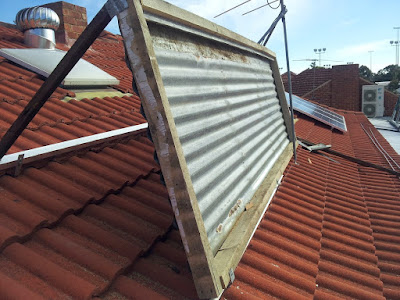Preventive Roofing Maintenance Inspections: Benefits, Tips, and Types | Naples Roofing
Every now and then, we see commercial and industrial roofs fail unnecessarily due to a poor preventive roof maintenance strategy. A good maintenance plan can help you save money, avoid roof damage, and extend the life of your roof. Here are a few roof maintenance inspection tips to keep your commercial and industrial roofing system in good shape.
Preventive Roof Maintenance Benefits
No unexpected Roof Leaks: Any specialist roofing contractor that offers services of roof repair, replacement, and new roof installation in USA will tell you that preventive maintenance is essential for spotting damage and preventing leaks. Most of the time, ageing roofs hide issues that are unnoticeable to the untrained eye, especially from a distance. If they go ignored and unattended before allowing the elements into your property, they will only become worse. Water penetration can happen quickly, soaking your possessions and causing damage to your property’s interior.
No unexpected costs: If you have an active routine maintenance plan or proactively schedule a roof checkup, you may plan for future renovations. It'll be a different story if leaks appear out of nowhere. Many contractors provide complimentary inspections to help you spot problems early on.
No warranties will be revoked: As any roofing specialist will attest, several manufacturers invalidate quality guarantees because problems are caused by poor maintenance. If you schedule regular specialist checks, the retailer is likely to reimburse you for the cost of new materials and labor.
No Claims Denied: When it comes to most insurance plans, there's a thin line between adequate maintenance and irresponsibility. Your insurer may deny your claim for a storm-damaged roof if there's a good chance you didn't keep up with maintenance requirements. In the end, you may be held liable for all expenses.
Tips for Preventive Roof Maintenance Inspection
Remove any and all debris: Debris should be removed, including loose gravel, mud, leaves, and twigs. If left on the roof, these items can collect water. Constant wetness can damage the roof, encourage the growth of algae and mildew, and lead to the formation of standing water.
Drains must be cleared: To avoid ponding that could lead to leaks or structural damage, field drains and auxiliary drains should be emptied.
Examine roof surface: Examine the roof's structure visually. Check for holes, cracks, and fastener back-out on single-ply roofs. Check for missing gravel or exposed felts on built-up roofs. Check for cracks or holes in roof seams and transitions and seal them. This inspection may reveal concerns about the roof membrane's integrity, necessitating a professional evaluation.
Examine roof penetrations: Drains, pipes, and other components that protrude through the roof surface are called roof penetrations. Roof penetrations are prone to leakage. HVAC units, vents, conduits, gas lines, pipe boots, and rain collars should all be thoroughly examined. If a roof penetration is leaking or damaged, the problem should be examined and repaired by a professional.
Examine rooftop's perimeter: Walk around the perimeter of the roof to inspect the edge features and make a note of any areas of concern, such as mold, soft spots, or algae. Check for any punctures or damage to the flashing at the walls and curbs.
Examine the sealant for any flaws: Keep a watch out for cracks, openings, degradation, or crazing in the sealant or caulking. Around penetrations and perimeter flashings, sealant failure is common. Sealant needs to be inspected on a regular basis and is frequently fixed.
Prevent leaks before occurring: A check of the roof may identify areas of damage that will need to be repaired. Repairing these little flaws before they become major problems will save you thousands of dollars in the long run. Contact a professional if the damage is beyond the facility staff's skill set, or if you are unsure about the necessary repair.
Carry out more research: Consider destructive testing, which necessitates making an opening for deeper inspection, or non-destructive testing, such as infrared scanning, to evaluate the severity of the problem.
Types of Preventive Maintenance Plans
The untrained eye misses a lot of things. Hiring a professional can help you avoid missing signs that something needs to be fixed or replaced before it becomes too costly. When dealing with commercial roofing, this is much more critical. Most professional commercial roof replacement, repair, and new roof installers, fortunately, provide a few different plan options.
Maintenance and cleaning
Full visual inspections
Replacement of the Roof
It's advised that you have biannual maintenance - once in the spring and once in the fall - to get the most out of any maintenance plan. During this period, a thorough visual exam should be carried out. Following that, any recommended maintenance, cleaning, and minor roof repairs will be carried out. Consult your roofing contractor to develop a preventative roof care strategy that fits your budget.
Naples Roofing offers all kinds of roofing services including new roof installation, repair, replacement, snow removal, emergency disaster relief, preventive roof maintenance, tracking, etc. for the commercial and industrial roofs for all types of roofing materials. Contact them today for any kind of roofing services in the USA!
Source URL :- https://www.reddit.com/user/naplesroofing1/comments/tssrfq/preventive_roofing_maintenance_inspections/



Comments
Post a Comment